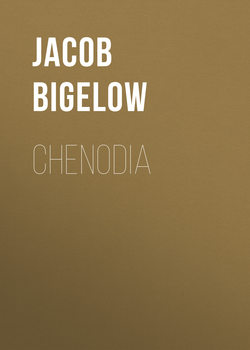Читать книгу Chenodia - Jacob Bigelow - Страница 1
ОглавлениеPREFACE
The work familiarly known as “Mother Goose’s Melodies” has the dignity of being already an undoubted classic among the most incipient cultivators of literature in the United States. It is a compilation taken mostly from “Gammer Gurton’s Garland” or the “Nursery Parnassus,” an English child’s book about a century old, of which various editions have been published in London, Glasgow, and other places. It is stated in one of its late prefaces that it was originally issued at Stockton in a small twopenny brochure, without date, printed by and for R. Christopher. Sir Harris Nicholas says it appeared in the year 1783. The American “Mother Goose” contains many interpolated articles indigenous in the Western hemisphere, which are of various, and some even of doubtful merit.
In England, the “Arundines Cami,” the “Sabrinæ Corolla,” and other representative works of distinguished seminaries, have occasionally drawn on “Gammer Gurton” for materials of their classic versions. These versions are sometimes stately in their prosodial exactness, and at other times as playfully loose as the original English ditties first set to rhyme by Gurton and afterwards copied by Goose.1
The Chenodia, now first printed, an experiment for the author’s own amusement, partly in classic verse of various metres, partly in mediæval and unclassic rhyme, and partly, like the original English, in no metre at all, is tendered as an offset for any disparagement of the dead languages contained in two essays read in 1865 and 1866, at a time when classical studies were paramount in Harvard University and other colleges of the United States.
J. B.
1
There appears to be some reason for believing that at least a century before Gammer Gurton’s works were published in England, a bodily “Mother Goose” was at work on the other side of the Channel. In Scott’s novel of “Woodstock,” chapter 28, Charles II., then a fugitive, says: “It reminds me, like half the things I meet with in this world, of the ‘Contes de Commère l’Oye.’” Not having been able to obtain a sight of “Commère l’Oye,” we must leave the original claim for authorship as a field for future controversy.
